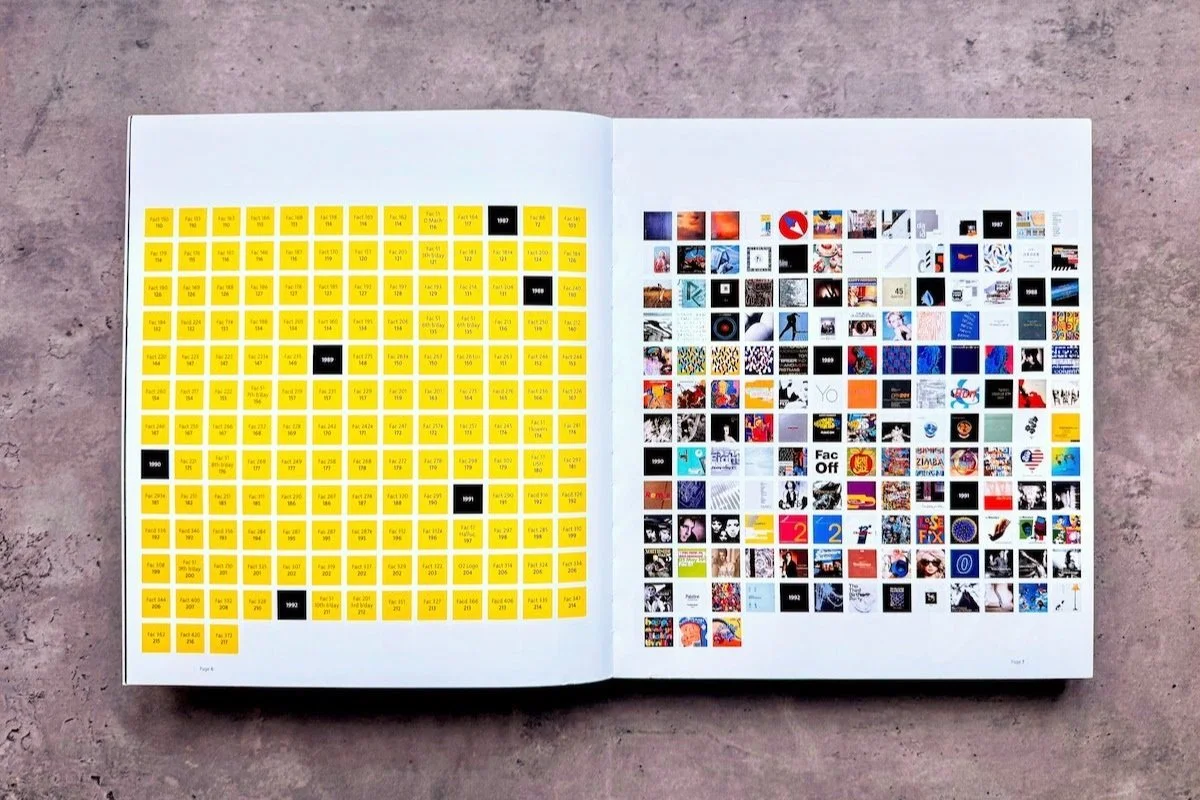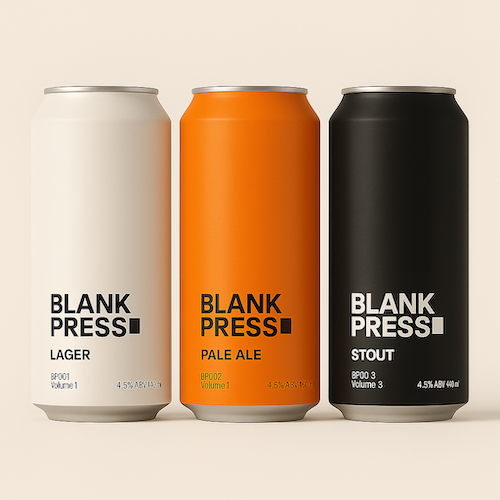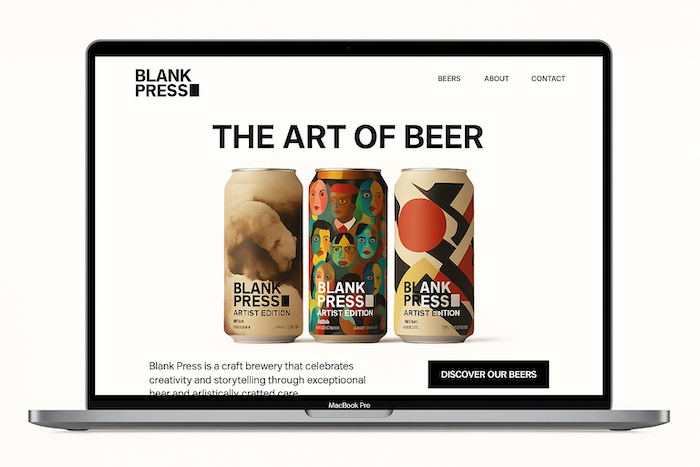How I Built a Craft Beer Brand in 3 Hours
19 May 2025Creating a beer brand from scratch in under three hours sounded like a wild challenge. While I didn’t quite stick to that time limit, what came out of the process felt far more complete, considered, and creatively fulfilling than I imagined. The goal was to explore how far I could take a concept using just ChatGPT Plus and my own strategic and creative input. The result was Blank Press, a modern, art-led, socially conscious craft beer brand.
Step 1: Setting the Brief
I began by asking ChatGPT to act as a brand strategist, craft brewer, designer, and marketer, to create a complete craft beer brand from scratch. I set a clear objective: to tailor the brand to UK millennials who value storytelling, sustainability, creativity, and local culture. These priorities were informed by a detailed consumer profile I’d developed, drawing on industry data to guide the process.
Step 2: Brand Foundations
One of the earliest breakthroughs came during a brainstorming session: the idea of blank canvas cans. These were minimal, colour-coded, and deliberately stripped back. This concept guided every visual decision that followed and became central to the Blank Press identity.
We formalised the idea into the Blank Press Brand Blueprint, a strategy document developed with ChatGPT that outlined our tone, mission, persona, brand story, and positioning. This ensured every decision — from visual identity to messaging — felt cohesive.
To test and validate my core ideas, I drew on Value Proposition Design by Osterwalder, Pigneur, Bernarda, and Smith. I also applied emotional storytelling insights from Emotion by Design by Greg Hoffman, and brand identity principles from The Brand Handbook by Wally Olins. These resources helped refine the concept once the initial creative direction had emerged, acting as a second layer of strategic reasoning.
Wally Olins’ framework helped clarify how Blank Press should behave across touchpoints. His focus on aligning behaviour, communication, and design reminded me that branding isn’t just visual — it’s also how a brand acts, speaks, and delivers. This led me to rethink the consistency of our labels, tone of voice, and social media. His emphasis on simplicity and differentiation shaped the minimalist core range and guided how the expressive Artist Editions would stand out.
Step 3: Name, Tagline & Story
I brainstormed name ideas with ChatGPT but ultimately chose Blank Press, a name I had already been circling. It was inspired by minimalist design, collectible print culture, and pop art influences. I added the tagline “The Art of Beer” to reflect both the literal and conceptual themes behind the brand.
The story developed quickly: a modern craft beer platform where cans become works of art. Each edition would be created by a different artist using their own mediums and styles to express a larger idea. The concept was loosely inspired by Factory Records’ release numbers — a system where everything the label produced, from records and posters to furniture, was given a unique catalogue code. This turned even the most functional items into part of a broader artistic narrative.
A page from Factory Records: The Complete Graphic Album by Matthew Robertson, showing the iconic catalogue system.
Step 4: Visual Identity & Packaging
With the concept in place, we began building the visual world. The “blank canvas” idea formed the basis for a recognisable, flexible system, documented in the Blank Press Visual Identity Guidelines. These outlined typefaces (Helvetica Neue, Inter, Space Mono), modular layouts, and consistent design rules across both core and artist editions.
The logo was a bold, stacked wordmark paired with a square symbol representing blank space. Drawing inspiration from Logo by Michael Evamy, I kept it clean, minimal, and adaptable to cans, websites, and merchandise.
Using DALL·E image prompts, I generated design mockups. The core range — Lager, Pale Ale, and Stout — is colour-coded and minimal, reinforcing the blank canvas concept. These cans create a strong identity and invite co-creation. Customers and artists are encouraged to design over them and share their work with #BlankPressArt. Selected entries may appear on our website or as future limited editions, turning drinkers into co-creators and deepening community ties.
The Artist Editions provide a bold contrast to the minimalist core range. Each design is expressive, layered, and thought-provoking. Individual cans can stand alone or connect as part of a wider visual or thematic series. Themes like climate change, identity, and mental health give the artwork depth, turning the label into a space for artistic commentary. A consistent layout along the bottom of each can offers structure while leaving room for creative freedom.
To bring the idea to life, I worked with ChatGPT to craft homepage copy that reflected the brand’s ethos. The final mockup, displayed on a clean MacBook screen, used our typography, layout, and messaging to introduce the Artist Editions, core range, and overall concept with clarity and emotion. We also created merch mockups — a tote bag, t-shirt, and branded glass — each acting as a canvas for community expression.
How I Added My Own Ideas
While ChatGPT helped with structure, copy, and design logic, I added several of my own creative ideas:
Using the core can colours as creative canvases for public and artist input
Numbered editions inspired by Factory Records
Stackable cans forming larger artworks
Ingredients that reflect the artwork’s theme
Charity donations linked to each edition’s message
These weren’t generated by prompts but came from insights I’d collected over time during my own exploration of beer branding and design.
Final Thoughts
This project showed me what’s possible with a focused creative workflow and the right AI tools. While the total time exceeded three hours when including design tweaks and mockups, the active use of ChatGPT was impressively efficient.
The key takeaway? AI isn’t the destination — it’s a co-pilot. It gave me momentum, structure, and creative short-cuts, but the best parts came from blending those tools with my own experiences, trusted books, and ideas I’d been developing for years.










